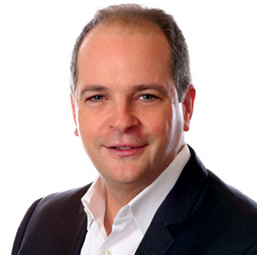ResMed sees nothing but ‘tailwind’

By Liz Beaulieu, Editor
Updated 9:50 AM CDT, Fri April 26, 2024
 SAN DIEGO – The impact of GLP-1 drugs on the CPAP therapy market has stolen the headlines recently, but ResMed Chairman and CEO Mick Farrell says the impact of wearables might be “a higher tidal wave.”
SAN DIEGO – The impact of GLP-1 drugs on the CPAP therapy market has stolen the headlines recently, but ResMed Chairman and CEO Mick Farrell says the impact of wearables might be “a higher tidal wave.”
Farrell, on a recent conference call to discuss the company’s financial results for the third quarter of its fiscal year 2024, noted the Samsung Galaxy Watch’s recent de novo authorization from the U.S. Food and Drug Administration to detect signs of sleep apnea – a development that has the potential to significantly increase the number of people seeking CPAP therapy.
“I think this might actually be a higher tidal wave than the big pharma tidal wave,” he said.
Farrell noted that the Google Fitbit and the Apple Watch are not far behind the Samsung Galaxy Watch and will likely release features to detect signs of sleep apnea, as well.
Analysts on the call, however, were more interested in the impact of GLP-1s, with Farrell continuing to cite data from a cohort of now 660,000 patients showing the drugs will have a positive impact on patients seeking CPAP therapy and remaining on therapy.
“The latest numbers are an improvement to what we presented previously,” he said. “For patients prescribed a GLP-1 medication, the latest data show a 10.5% higher propensity to start positive airway pressure therapy over those not taking the drug. As we follow these patients longitudinally, the resupply rate at 12 months is 310 basis points higher and then at 24 months the resupply rate is 500 basis points. These data show clearly that the new GLP-1 pharmaceutical class is actually a tailwind for our ResMed business, bringing more patients and more motivated patients into the health care system.”
Farrell also addressed the results of Eli Lilly’s SURMOUNT-OSA clinical trial, which compared the safety and efficacy of tirzepatide, a dual GLP-1/GLP receptor agonist, to a placebo for non-diabetic patients with sleep apnea and obesity. There will be a “final data readout” for the trial in June.
“What it showed is somewhere in that sort of 59% to 63% reduction of AHI, and if you do the math on it and you look at the sort of average AHI coming in at around 50%, the average AHI coming out is sort of in the low 20%s,” he said. “So, patients were, at the end of the study, on average, suffocating every 3 minutes of sleep after treatment for this drug, right? And so, an AHI of 20% or more – moderate plus sleep apnea – these patients would be treated by any sleep physician on the planet and really require positive airway pressure treatment. So, I think that’s the most important thing to say right up front."
Other highlights from the call:
-
Farrell said new patient flow into the channel has been steady, with flow generator sales growing in the third quarter. “We’ve sort of gone through the perturbations of the COVID dip, the COVID rebound, the supply chain dip, the supply chain rebound, and now we’re at steady state.”
-
He said mask and accessory sales are “expanding at or above the market in a competitive category,” with 10% growth globally and 12% in the U.S., Canada and Latin America.
-
Farell said ResMed’s resupply business – powered by AirView for physicians, myAir for patients and Brightree for HME providers – has “a lot more runway left,” with many patients not on subscription programs or appropriate schedules.
-
He said ResMed plans to scale its demand gen efforts globally under the leadership of its new global chief marketing officer. “Without signaling directly and exactly how, where, and when we’re going to do it, I can tell you we’ve got a global team looking at this. One thing that is different from what we did before is that I believe in what gets measured gets done and every single campaign we’re going to do is going to have hardcore metrics.”
Comments